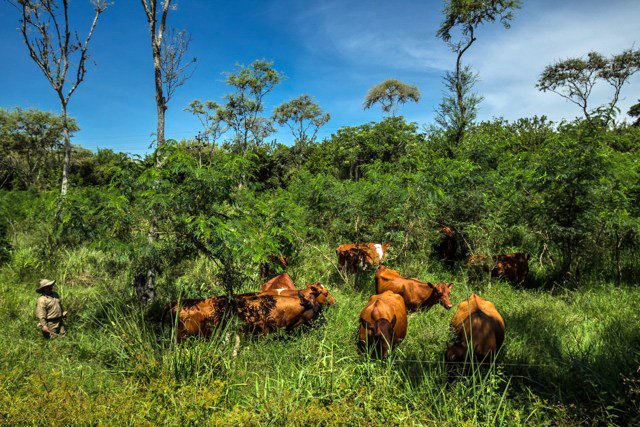-
Lisa Palmer, Future Food 2050
Greener Pastures for Cattle Ranching
November 26, 2014 By Wilson Center Staff
Imagine an overgrown perennial garden. Impenetrable, shrubby bushes knit themselves together in long rows. Grasses reach chest high. Native hardwood trees hog the perimeter.
The plan seeks to reduce pasture land from 94 million acres to 70 million
But this dense, green expanse is not a garden. It is a new kind of forested “pasture” that Latin American farmers are using to raise more cattle on less land while producing twice the milk and meat per acre. And Colombian researcher Enrique Murgueitio, who earned his doctorate in veterinary medicine and animal husbandry, is leading the way into this new, more sustainable farming landscape.
At the Cali, Colombia-based Center for Research in Sustainable Systems of Agriculture (CIPAV), where Murgueitio is executive director, farmers from throughout Latin America learn how to replace wide expanses of conventional pasture stubble with agro-forestry methods that use 4,000 plants per acre – a mosaic of trees, forage shrubs, tropical grasses and groundcover – to feed their cows. To date, around 74,000 acres of land in Latin America have been transformed into this intensive, silvo-pastoral system of grazing, and raising cattle with agro-forestry is central to Colombia’s National Development Plan for cattle ranching. The plan seeks to reduce pasture land from 94 million acres to 70 million acres while increasing cattle numbers from 23 million head to 40 million by 2019.
Continue reading on Future Food 2050.
Lisa Palmer is a Wilson Center Public Policy Scholar and freelance journalist.
Sources: National Planning Department (Colombia).
Photo Credit: Used with permission courtesy of Meredith Kohut/World Animal Protection.
 A Publication of the Stimson Center.
A Publication of the Stimson Center.




